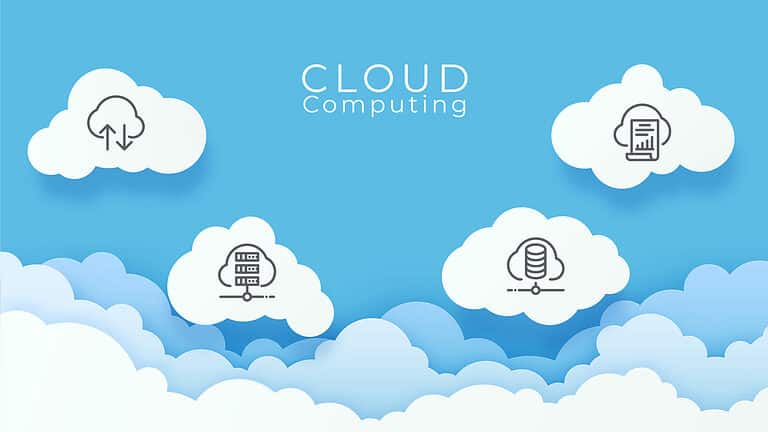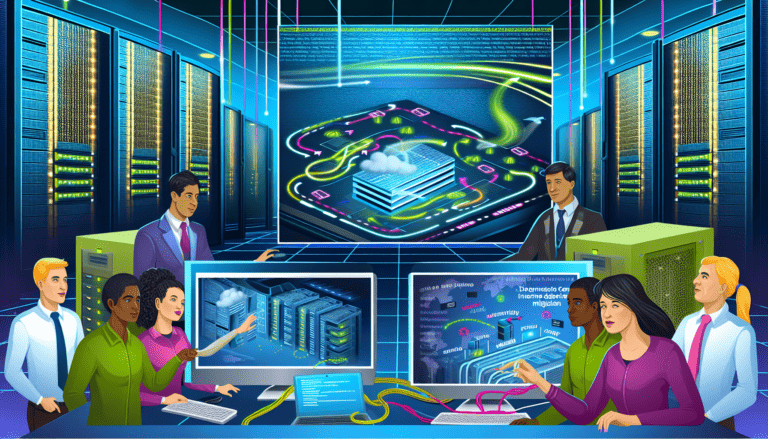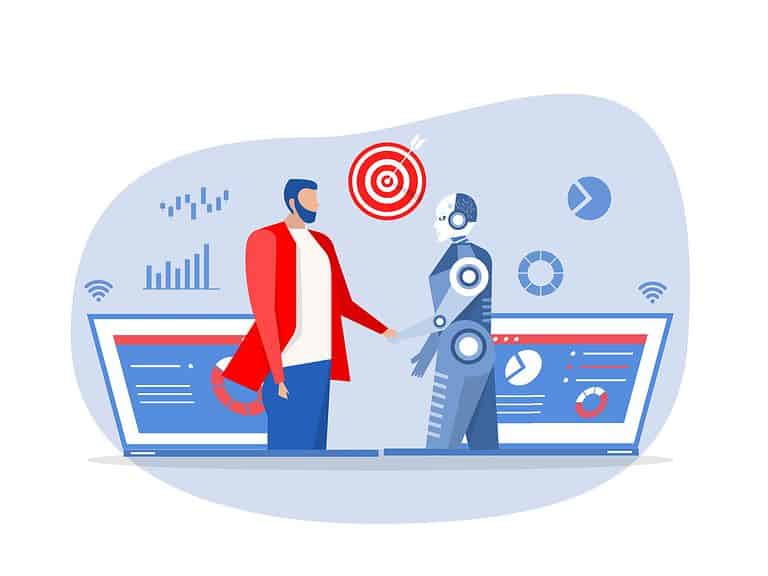Essential Guide to Application Modernization: Transform Your Legacy Systems
Modernizing your applications is key for businesses to succeed in the ever-changing digital world. This guide outlines essential steps needed to ensure improved agility, increased security and cost management when it comes time for application modernization, updating older systems that may be holding you back from Growth.
Key Takeaways
Application modernization unlocks agility in operations, enhances customer experiences, and helps achieve business goals; it starts with identifying the applications in need of modernization using a comprehensive assessment.
A well-defined modernization strategy is fundamental and involves establishing objectives, selecting technologies, and preparing for the transition, with careful evaluation of current systems and setting clear modernization objectives.
Cloud adoption is pivotal in the modernization process, providing scalability and flexibility through public, private, or hybrid clouds, while ensuring ongoing cultural transformation within the organization is crucial for embracing digital transformation fully.
Unlocking the Potential of Modernizing Legacy Applications

In order to bring legacy systems up-to-date and gain a competitive edge, organizations need to conduct an application assessment. This is where they can evaluate their applications’ architecture and performance against current technology standards. The process reveals which of the existing programs don’t meet business needs or have excessively high maintenance costs due to inadequate flexibility. Application modernization then allows companies to reap the benefits such as improved customer experiences, increased agility in operations and greater overall success in reaching goals set for them by management.
To begin this journey, organisations must identify what apps will require modernization first. That’s why carrying out an exhaustive app review plays such a pivotal role in discovering problems early on, allowing firms ample time needed for strategising subsequent development works accordingly.
The Imperative to Modernize Legacy Systems
Businesses need to be conscious of various elements when considering modernizing legacy applications, like the total cost of ownership and whether it meets current business needs. Outdated technology affects employee satisfaction, which can lead to a decrease in productivity. So upgrading these outdated systems with a contemporary cloud platform will help boost morale and efficiency. Budgetary issues as well as complicated existing structures make modernization challenging – but if managed strategically, this process can succeed.
Identifying Your Core Business Applications
It is essential to identify core existing applications for modernization so as to optimize business processes. Doing this allows firms to direct their efforts where it matters most, improving operations, cutting costs and enhancing the company’s competitive edge. For identifying these apps, companies have several strategies at their disposal such as evaluating corporate goals and application characteristics along with using modern tools like APIs, cloud computing services and data analysis technologies. They should also assess both how easy or hard an app may be modified plus what kind of value enhancement could result from its modifications in order prioritize appropriately when looking into which existing apps need additional modernizing attention first-hand.
Charting the Course for Successful Application Modernization Strategy

For a successful modernization journey, the first step is to develop an application modernization strategy. This plan contains information on how best to modernize existing systems with clear objectives and technology selections in mind for smooth transitioning. It is imperative that businesses invest in appropriate tools and technologies at the beginning of their transformation process so they can lay down sturdy grounds for future projects based off efficient solutions, as part of this comprehensive roadmap laid out by the adopted modernization strategy. Once these core business applications have been identified, then comes setting up a structured method towards achieving strategic goals effectively through modernizing programs needed within this complex system fully equipped with all necessary elements.
Assessing and Evaluating Legacy Systems
Evaluating the current state of legacy systems is essential when formulating a modernization strategy. There are certain signs that can indicate if these systems require an upgrade, such as heavy hardware dependencies, sluggish performance levels and lack of security features or insufficient capability to meet modern business demands along with high maintenance costs. After identifying which systems need updating, it’s important for businesses to carefully examine each component and evaluate its complexity in order to effectively devise their own unique approach towards successful system modernization process.
Defining Clear Modernization Objectives
For successful modernizing, it is essential to establish objectives that coincide with the company’s overall vision. This coordination ensures that development initiatives contribute towards achievement of business goals and deliver desirable profits.
Measureable ambitions should be predetermined for monitoring advancement of modernism efforts such as increasing user gratification, augmenting productivity and shortening time-to-market, all these are crucial if we wish to measure success.
Navigating the Modernization Process: Approaches and Methodologies

The modernization process requires careful consideration of the various available methods and technologies, associated costs, design considerations, workloads for implementation, security needs as well as logistics. It is key to evaluate these factors in order to make an informed decision on which approach will be most beneficial towards achieving desired business objectives and targets set out by a given modernization project.
For applications that may encounter significant relocation issues but offer high value rewards with successful execution. Strategic approaches are often implemented so that risks can be effectively managed along with any potential expense implications while still keeping focus on advancing said application portfolios into modernized forms.
By understanding different possible paths regarding the framework of a chosen modernization project then evaluating subsequent factors accordingly, practitioners should determine which form of approach would best enable them to move forward with their endeavors efficiently and proficiently whilst also maintaining the utmost quality through optimized results being generated within allocated timeframes suited toward defined goals or objectives intended.
Selecting the Right Modernization Approach
To ensure the success of a modernization project, selecting an appropriate modernization approach is essential. Five strategies are available to modernize legacy applications. Rehosting, refactoring, re-architecturing, rebuilding and replacing which will all have different levels of risk attached and distinct effects on existing code or architecture. Assessing these approaches carefully becomes critical in order to find one that offers ease as well as minimal effect while still mitigating risks involved.
Integrating New Technologies and Practices
The modernization process necessitates the integration of novel technologies and practices. Crucial key technologies such as containers, Kubernetes, and DevOps all contribute significantly to this endeavor. Containers are essential for application development and managing, allowing a microservices architecture while also offering portability across systems. As well as this, Kubernetes is responsible for keeping track of these same components by aiding in scalability opportunities along with providing overall management capabilities necessary during times of change.
DevOps culture needs to be adopted if true modernization efforts have any hope of success. It’s collaboration between IT professionals & software developers that opens up new pathways towards efficient implementations within an organization’s structure itself—fostering communication which leads to optimization goals being met on time or earlier than expected timelines!
Overcoming Technical Challenges in Legacy System Modernization

The modernization of legacy systems brings with it many advantages. The process is fraught with various technical difficulties. From discontinued support to dated technology stacks and inadequate performance levels to security issues, these obstacles must be navigated effectively for a successful transformation project through an appropriate strategy such as refactoring. To make sure data and applications remain safe during modernizing legacy apps’ progress, stringent security measures should also be implemented.
Dealing with Monolithic Applications
Monolithic applications, though reliable and dependable in nature, have a downside when it comes to their lack of scalability and agility. Splitting up the application into multiple microservices is an effective strategy that can tackle these shortcomings.
The move towards this architecture grants various advantages such as decreased time-to-market speed, steady scaling capabilities, more efficient employee productivity levels and less complexity with regards to the overall application structure.
Ensuring Security During and After Transition
Making sure that security is upheld throughout and post the modernization project is essential. Partners involved in modernizing a legacy system can give considerable resources, have influence on decision-making and assist with aligning to corporate objectives which will ensure the successfulness of this endeavor. A Reverse Gateway allows for safe access from the new environment while safeguarding data when transferring it over during transition—an important factor when updating legacy systems.
Once you’ve completed your modernization process, there are several additional safeguards that should be implemented such as firewalls, intrusion detection software, physical security measures plus making frequent updates. All necessary for keeping an efficient and secure posture going forward.
Financial Planning for Application Modernization Projects

When it comes to upgrading legacy systems, financial planning is essential. The cost of application modernization can vary drastically and run anywhere from $40,000, up to 1.5 million depending on the size and scope involved. To successfully secure funding for such software development or modernization initiatives requires an organized approach: gaining executive support as well as researching affordable solutions like open-source offerings or subscription services are all key components in this process.
Estimating Costs and Benefits
Modernization of legacy systems is a major factor in financial planning. To figure out the return on investment for this type of project, an analysis must be done to identify what needs improvement and determine which modernization strategy will best fit business objectives. Application modernization requires several elements that need to be accounted for when estimating costs and benefits: upfront investments such as software/hardware purchases, implementation expenses, data migration fees. Training program expenditures, plus maintenance and support charges after set-up are complete. Training staff as well as change management should also come into play during estimation since it forms part of modernizing projects. TCO (Total Cost Ownership).
Securing Funding and Executive Support
Executives play an important role in ensuring the success of a modernization project since they provide resources, determine how it should align with business objectives and create an understanding for its value. For legacy application modernization initiatives to be successful, one must devise a thorough plan containing explicit goals as well as invest effort into assessing existing systems before dedicating funds towards potentially lucrative projects. Having executive support is also vital because when properly managed, they can influence modernized efforts while enabling progress within their organization’s needs.
Accelerating Cloud Adoption in Modernization Efforts
Cloud adoption is an integral part of any modernization effort, and there are many cloud environments to choose from that can facilitate this process. These range from public clouds such as AWS and Microsoft Azure to multi-cloud strategies involving more than one provider. It’s important when selecting the ideal environment for application modernization to consider all business requirements, scalability needs, data security concerns and budget allowances in order to speed up cloud implementation.
Choosing Between Public, Private, and Hybrid Cloud
When selecting between public, private and hybrid cloud computing solutions for an organization, each one brings unique benefits to the table. Private clouds offer higher security levels as well as more control over data while providing flexibility and scalability advantages typically associated with cloud technologies. Public clouds, on the other hand, provide scalable capabilities but may not have the same level of security or manageability that a private solution would give you.
Hybrid clouds are designed to be able to integrate both components – granting increased flexibility of using elements from either technology within one environment. Offering best aspects of both worlds in terms of considerations such as control, data confidentiality & enhanced protection along with ability to quickly scale-up/down resources according to requirements imposed by any given business need. Knowing these key differences is essential in order determine which type works best when it comes to meeting enterprise objectives.
Migration Strategies for Cloud Environments
The following step, once the type of cloud is selected, involves designing an outline for relocating applications and infrastructure to the cloud. Such a plan should involve detailed movements as well as establishing concrete migration targets. During this phase, it’s important to consider objectives, modifications in network infrastructures, and roles & duties assigned. Data-application dependencies or requirements on security and conformity, etc., plus cost assessment prior to determining which provider ought to be favored? Some tactics like ‘lift and shift’ may be used with no changes made throughout transfer, simply getting application workloads shifted over into The Cloud without making any amendments! Finally, keep in mind best practices such as performance tracking monitoring validation testing when all said done along with factoring sharpened costs optimization while guaranteeing compliance followed too by necessary safety measures.
Cultivating a Culture Ready for Digital Transformation
In order to see successful modernization efforts come to fruition, organizations need to undertake more than just technological changes. There is also the matter of fostering a cultural change within the organization. This means allowing employees to be part of application modernizing processes and encouraging digital transformation as an overall company culture. Strategies can include analyzing complexity metrics through Artificial Intelligence-based solutions, devising sensible plans for modernization goals, while simultaneously stressing out why these measures are beneficial according to gathered analysis data from such AI programs. All this should combine into aiding staff in achieving their respective organizational objectives with respect to digitization upgrades.
Training and Empowering Teams
Fostering a culture of adaptability with Agile methods, forming compact leadership teams and investing in training are all essential steps to prepare for digital transformation. Change management is also key when it comes to empowering employees throughout this journey by engaging them, seeking their input, providing necessary tools and upskilling where needed. Promoting collaboration across different functions while communicating the vision can help foster an environment that enables success during transition into digitization. Automation may be used as well if applicable so organizations can move forward on their path towards modernization more quickly.
Managing Change in Business Operations
Leadership has a significant role to play in managing change related to business operations within digital transformation. They must create an innovative environment, encourage employee participation, provide helpful direction and align technology with objectives for improvement of collaboration and communication among team members. Setting up a clear vision for progress is critical as well. Encouraging staff engagement alongside providing proper training and guidance are essential components necessary during the transition process too, one that requires consistent monitoring so adjustments can be made accordingly at any given moment while instilling a continuous learning culture along the way.
Partnering for Success: Choosing a Modernization Ally
Selecting the suitable modernization partner is an essential step for achieving a successful modernization project. The partner needs to contribute with their abilities and technical proficiency, encouraging intensive cooperation during all stages of the task at hand. To make sure this happens, it’s necessary to conduct a meticulous analysis of what they bring to the table in terms of qualifications and knowledge base. Maintaining momentum throughout will be crucial too, so choosing wisely can have considerable influence on your overall success rate.
Criteria for Selecting a Modernization Partner
Organizations should factor in the capability and technological aptitude of a legacy modernization partner. Important considerations include their ability to cater for multiple source software languages, and the provision of risk assessments for code. Prioritizing quality control and customer satisfaction plus offering migration tools that are compatible with modern technology as well as providing cost analysis support while displaying demonstrable expertise in legacy system modernization processes.
It is also essential to assess the track record performance of possible partners by studying successful past projects carried out using verification portals along with examining their background thoroughly.
Collaborating Effectively with External Experts
It is essential to establish a strong relationship with your modernization partner in order to reach the desired objectives, and trust plays an integral role in this process. To enhance communication between both parties, cloud-based platforms can be employed along with agile development techniques and regular feedback loops.
Resolving any issues that arise during legacy system modernization requires strategic measures such as ensuring compatibility amongst components and integrating them properly for successful execution of the project.
Measuring Progress and Impact
When the modernization project is initiated, it’s important to measure and monitor progress in order to evaluate effectiveness. This is where Key Performance Indicators (KPIs) come into play – they allow for continuous assessment of results while keeping an eye on the underlying baseline performance metrics and overall corporate objectives. The suggested process when setting up KPIs specific to application modernisation projects starts with a thorough examination of business goals as well as measuring benchmarks from before implementation occurred.
Establishing Key Performance Indicators (KPIs)
Evaluating the existing system and prioritizing new features are important steps for calculating a return on investment (ROI) in legacy system modernization initiatives. Selecting an appropriate modernization strategy that is aligned with organizational objectives can help track progress of modernized applications and determine if digital transformation projects have been successful or not – by utilizing Key Performance Indicators (KPIs).
Continuous Improvement Post-Modernization
Once the app modernization project has been completed, it is necessary to continually observe and optimize modernized applications in order for them not to become legacy systems again. Monitoring must be done on an ongoing basis as well as creating a strategy towards continued improvement. Conducting an assessment of the existing system is key.
Best practices should also be utilized such as formulating measurable objectives, researching different approaches of modernization, prioritizing apps for development, forming clear strategies toward continuing progress and encouraging a culture where perpetual refinement can take place.
Summary
Modernizing legacy systems calls for mindful preparation and planned implementation. Companies must evaluate core business applications, devise a modernization plan, choose the right methodology to modernize their current system, tackle technical obstacles, manage costs effectively by taking advantage of cloud technology adoption as well as transition into digital transformation with the assistance of external experts in order to ensure smoother customer experience all-round. With continual improvement and monitoring closely during this process. Firms can optimize performance at lesser expenses while elevating user satisfaction too.
Frequently Asked Questions
Why is application modernization difficult?
The process of modernizing applications is complex due to the limited number of experienced professionals, aversion to change and difficulty in deciding on an effective strategy which can fit within allotted costs and timelines.
What are the 5 Rs of application modernization?
The modernization process entails five stages: Rehosting, Refactoring, Revising, Rebuilding and Replacing. These will migrate applications for scalability, enhance the functions they provide, create a modern future platform to work on or find an appropriate alternative solution.
What is an example of modernization?
In order to make the workplace of today, a modern upgrade could be made with state-of-the-art computers, high speed web access and an espresso machine. This would bring up any office in this era and give it contemporary flair.
Why is it important to modernize legacy systems?
Modernizing legacy systems is key for reducing maintenance costs and increasing flexibility, both of which are essential in order to attain improved business agility, better customer experiences and higher chances of success.
How can businesses identify their core business applications for modernization?
Businesses can prioritize their core business applications for modernization by evaluating objectives, features of the app, and technological architectures while taking advantage of advanced technology such as APIs, cloud solutions and data analysis. This methodical methodology will help them identify which apps to upgrade. By utilizing current methods like Application Programming Interfaces (APIs), online services as well as analyzing facts, they are able to determine precisely which tools need modernizing in order for them to reach their desired outcomes most efficiently.







